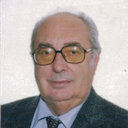The antioxidant, aged garlic extract, exerts cytotoxic effects on wild-type and multidrug-resistant human cancer cells by altering mitochondrial permeability.
Nøgleord
Abstrakt
Aged garlic extract (AGE) has been shown to possess therapeutic properties in cancer; however its mechanisms of action are unclear. In this study, we demonstrate by MTT assay that AGE exerts an anti-proliferative effect on a panel of both sensitive and multidrug-resistant (MDR) human cancer cell lines and enhances the effects of hyperthermia (42˚C) on M14 melanoma cells. The evaluation of the mitochondrial activity in whole cancer cells treated with AGE, performed by cytofluorimetric analysis in the presence of the lipophilic cationic fluorochrome JC-1, revealed the occurrence of dose-dependent mitochondrial membrane depolarization. Membrane potential was measured by the TPP+ selective electrode. In order to shed light on its mechanisms of action, the effects of AGE on isolated rat liver mitochondria were also examined. In this regard, AGE induced a mitochondrial membrane hyperpolarization of approximately 15 mV through a mechanism that was similar to that observed with the ionophores, nigericin or salinomycin, by activating an exchange between endogenous K+ with exogenous H+. The prolonged incubation of the mitochondria with AGE induced depolarization and matrix swelling, indicative of mitochondrial permeability transition induction that, however, occurs through a different mechanism from the well-known one. In particular, the transition pore opening induced by AGE was due to the rearrangement of the mitochondrial membranes following the increased activity of the K+/H+ exchanger. On the whole, the findings of this study indicate that AGE exerts cytotoxic effects on cancer cells by altering mitochondrial permeability. In particular, AGE in the mitochondria activates K+/H+ exchanger, causes oxidative stress and induces mitochondrial permeability transition (MPT).


